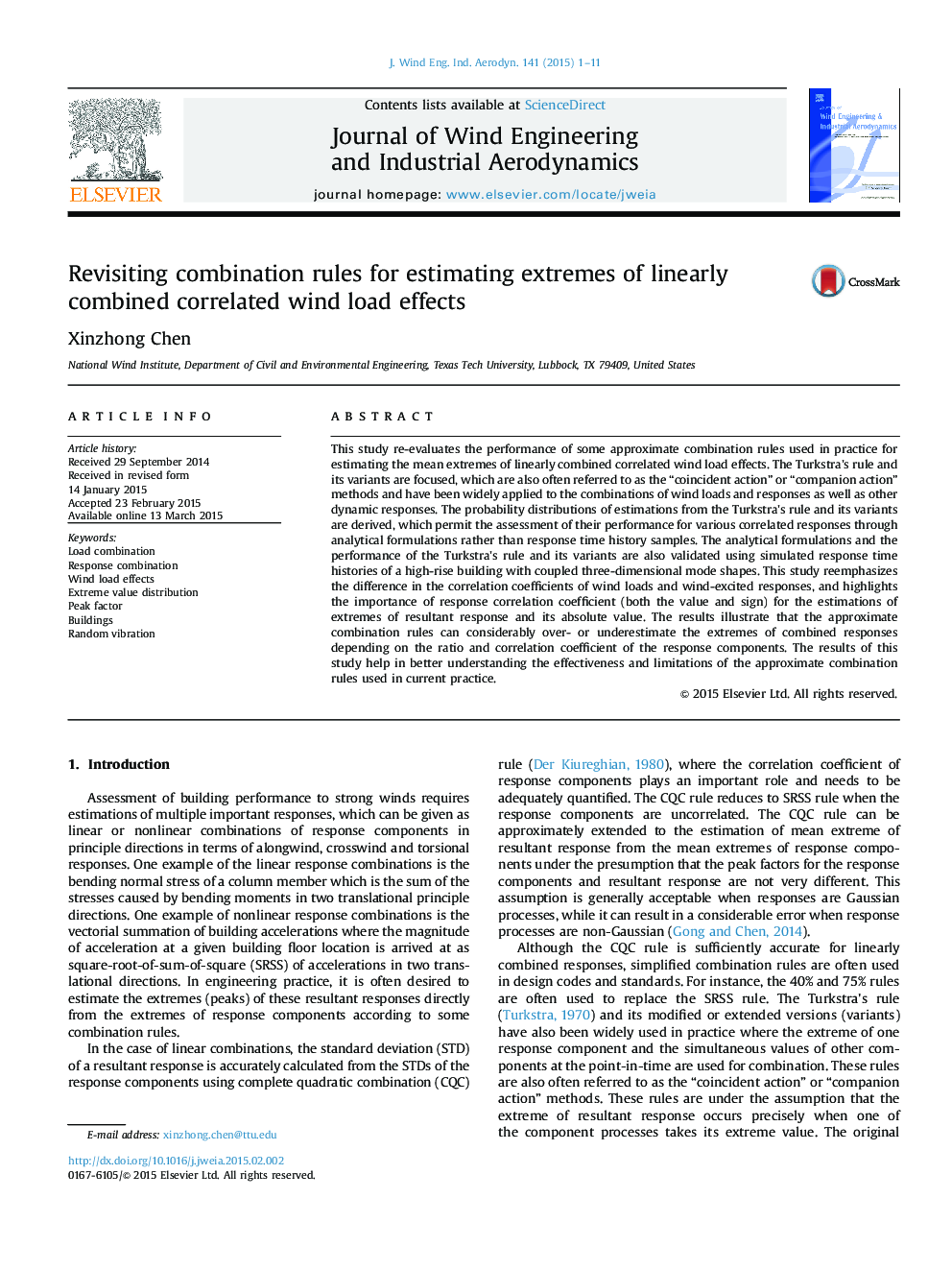| Article ID | Journal | Published Year | Pages | File Type |
|---|---|---|---|---|
| 292958 | Journal of Wind Engineering and Industrial Aerodynamics | 2015 | 11 Pages |
This study re-evaluates the performance of some approximate combination rules used in practice for estimating the mean extremes of linearly combined correlated wind load effects. The Turkstra׳s rule and its variants are focused, which are also often referred to as the “coincident action” or “companion action” methods and have been widely applied to the combinations of wind loads and responses as well as other dynamic responses. The probability distributions of estimations from the Turkstra׳s rule and its variants are derived, which permit the assessment of their performance for various correlated responses through analytical formulations rather than response time history samples. The analytical formulations and the performance of the Turkstra׳s rule and its variants are also validated using simulated response time histories of a high-rise building with coupled three-dimensional mode shapes. This study reemphasizes the difference in the correlation coefficients of wind loads and wind-excited responses, and highlights the importance of response correlation coefficient (both the value and sign) for the estimations of extremes of resultant response and its absolute value. The results illustrate that the approximate combination rules can considerably over- or underestimate the extremes of combined responses depending on the ratio and correlation coefficient of the response components. The results of this study help in better understanding the effectiveness and limitations of the approximate combination rules used in current practice.
